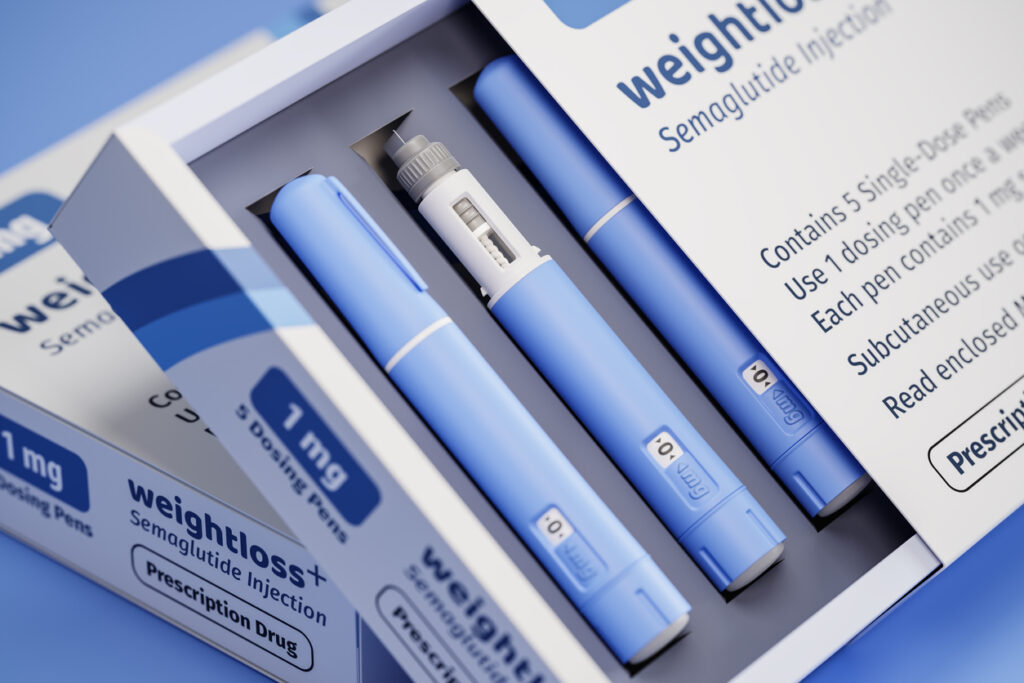GLP-1 injectable medications for weight loss are significantly transforming the field of facial plastic surgery, according to the 2024 statistics from the American Academy of Facial Plastic and Reconstructive Surgery (AAFPRS).
Nearly half of AAFPRS facial plastic surgeons have observed a noticeable rise in patients seeking procedures to mitigate the cosmetic effects of these medications. Facial plastic surgeons have reported a 50% rise in the average number of fat grafting procedures performed over the past year, a trend likely fueled by patients addressing “Ozempic Face” and aiming to restore lost volume while enhancing facial contours.
“While these drugs are highly effective at achieving rapid weight loss, they often result in issues like volume loss and sagging skin,” notes Cleveland, OH-based facial plastic and reconstructive surgeon Patrick Byrne, MD, MBA,President of the AAFPRS, in a news release. “As a result, more patients are turning to facial plastic surgery to address these aesthetic concerns.”
One in four surgeons anticipate that GLP-1 medications will drive a growing demand for non-surgical treatments, such as injectable fillers and skin tightening procedures, as patients seek less invasive options to manage these aesthetic changes.
In response to the skyrocketing popularity of GLP-1 medications, 10% of AAFPRS members have started personally prescribing them—a figure that is anticipated to grow in the coming years.
The Top Procedures of 2024
Consistent with the past five years, rhinoplasties, facelifts (including partial facelifts), and blepharoplasties remained the top three surgical procedures in 2024, with rhinoplasty continuing to be the most frequently requested surgery.
Notably, about 80% of AAFPRS members report that more than 10% of patients seeking rhinoplasties are seeking revisions of previous surgeries.
Facelifts maintain their popularity with nearly 90% of AAFPRS members performing them each year. Of note, facelift patients are trending younger, with patients aged 35-55 rising from as low as 26% to as high as 32% in recent years. A total of 67% of facial plastic surgeons agree that the average age of facelift patients is likely to trend younger.
However, minimally invasive procedures account for 80% of the total number of treatments. Neurotoxins and dermal fillers remain the go-to treatments, with 90% of surgeons performing these procedures regularly.
Menopause Makeovers
Hormonal changes during menopause significantly impact the skin and facial structure, leading to thinner skin, sagging around the eyes, and weakened facial bones. These changes often result in drooping brows, looser eyelids, and the development of jowls. In response, more women are turning to both surgical and non-surgical treatments to combat the effects of menopause.
A total of 28% of AAFPRS members agree that patients seeking treatments reference symptoms of perimenopause- and menopause-related concerns as a reason for consultation.
“Soft tissue fillers, especially biostimulatory fillers, can help replace collagen stores from the inside out and outside in, which can be helpful for women experiencing a drop in collagen levels, leading to wrinkles and fine lines,” says Dr. Byrne. “The growing conversation around menopause and aesthetics marks a significant shift in how women approach this life stage, empowering them with the knowledge and resources to embrace and celebrate it with confidence.”
Male Facial Plastic Surgery
While women remain the primary demographic for plastic surgery, men are increasingly seeking cosmetic procedures, with 92% of AAFPRS surgeons reporting male patients in their practice, with blepharoplasty, rhinoplasty and facelifts being the most common surgeries. Notably, hair transplantation stands out as the only procedure where men significantly outnumber women.
“Non-surgical treatments continue to gain traction among men, especially neurotoxins like Botox, which are increasingly sought after by those striving to look refreshed, reduce signs of aging, and preserve a competitive advantage in both professional and social settings,” observes Dr. Byrne. In fact, just like their female counterparts, neurotoxins, fillers and skin treatments remain the top three non-surgical procedures among men. This trend highlights the growing acceptance of aesthetic treatments among men and their changing approach to self-care.
Regenerative Medicine
One of the most exciting trends highlighted in the survey is the rise of regenerative medicine, with 57% of AAFPRS members forecasting it as a major area of innovation in the aesthetic field. Dr. Byrne states, “Treatments like platelet-rich plasma (PRP) and exosome-based therapies are gaining traction, providing patients with minimally invasive options that are intended to target the cellular level to rejuvenate and repair skin.” Exosome therapies, in particular, are attracting significant attention, with one-in-four AAFPRS surgeons predicting they will play a pivotal role in the future of aesthetic medicine, enhancing outcomes and improving patient satisfaction.
The 2024 AAFPRS annual member survey was conducted in December 2024 by ACUPOLL Precision Research, Inc. through an online survey from a select group of the organization’s members.


